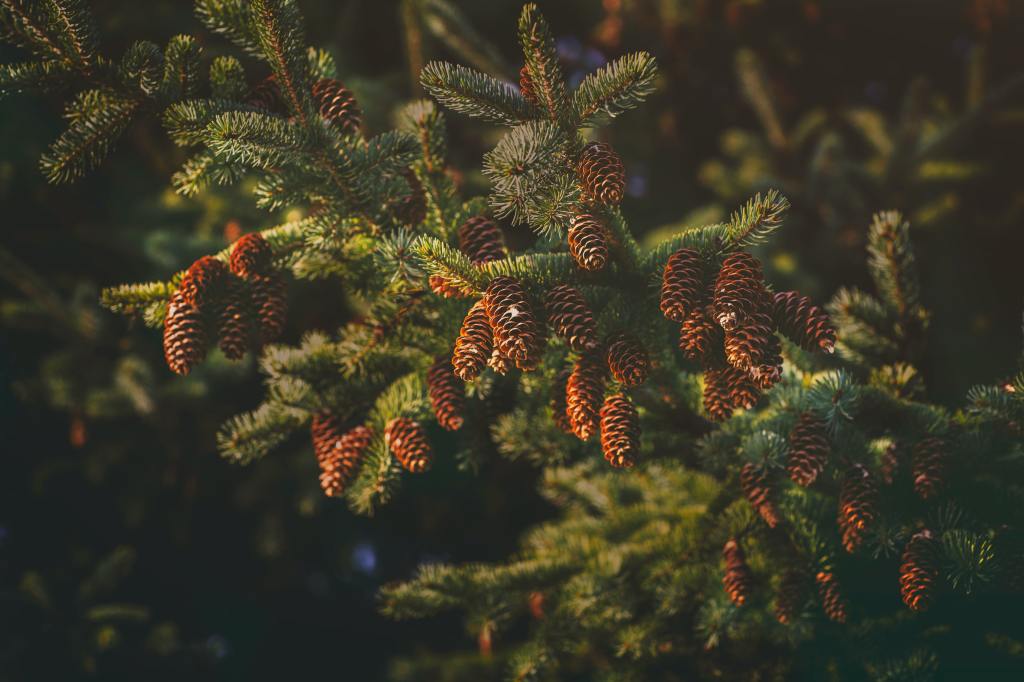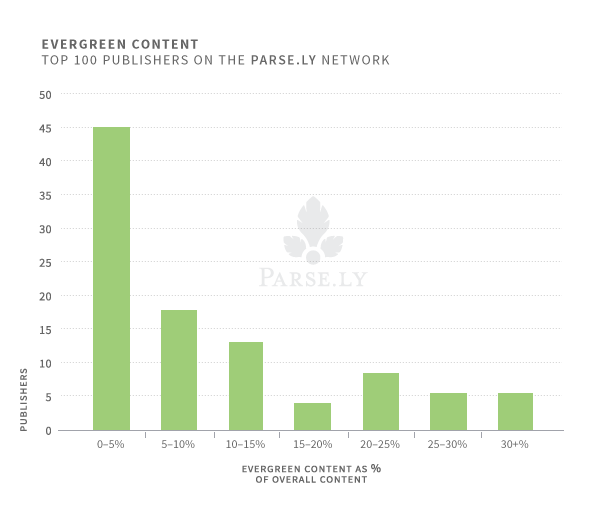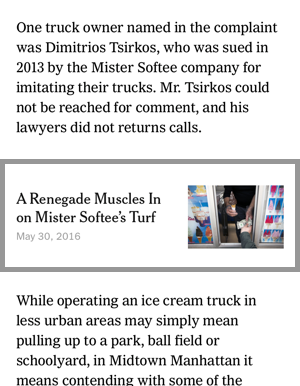Evergreen Content: What It Is, Why It Matters, What You Can Do With It, and How You Can Find It

Updated April 2023
Online content has a three-day lifespan on average. To make your content last longer and work harder, focus on evergreen topics and formats.
- What is evergreen content?
- Why should I care about evergreen content?
- What can my organization do with evergreen content?
- How do I find evergreen content?
What is evergreen content?
Evergreen content broadly refers to any article, post, or video that has visitors come to it well beyond this typical three-day attention cycle.
This means evergreen content attracts readers organically, often through search traffic or referral links. In one study of Parse.ly’s content network, over half of the top 100 sites get more than 5% of their page views on evergreen content. Even if you haven’t paid any attention to it, you likely already have evergreen content in your own archive.

Why should I care about evergreen content?
Traditionally, content teams focus a lot on creating new content because of new initiatives or new target keywords. Of course, releasing relevant, timely content is important, but creating from scratch can be difficult and time-consuming.
In fact, according to research from our Content Matters 2023 Report, content marketers say their biggest challenge is limited resources.
So, how can content professionals make the impact they need by doing more with less? The answer: evergreen content.
Evergreen content is the gift that keeps on giving. Since audiences find and engage with it organically long after you hit ‘publish,’ it helps you rank for keywords and foster engagement without having to break the bank promoting it or creating new content. Evergreen content also helps you fill the gap periods between more timely campaigns with proven, effective content.
Making the most of this content by creating an evergreen content strategy will save your team time while maximizing ROI. Re-promoting, updating, and repurposing evergreen content allows you to get more out of existing work, while knowing that the additional effort you put in is more likely to pay off. It also allows your team to be more experimental with new content.
Teams that focus on evergreen content see improved SEO, engage with their audiences more, and encourage loyal readers by reminding their audience of their existing work.
What can my organization do with evergreen content?
Content teams often deliberately try to create evergreen posts, sharing timeless tips and making how-to posts. For media brands, on the other hand, many posts become evergreen on their own because a topic becomes popular again, or because the subject matter is timeless.
In the 2014 New York Times’ Innovation Report, the authors determined that a primary focus for increasing audience growth was to increase discovery options for readers. Among their top recommendations? Finding, promoting and repackaging evergreen content.
Today, on the New York Times’ digital properties, archived content is prominently displayed along newer stories, giving context and reminding readers of the deep history of the Times’ reporting archive.

Evergreen content strategies include habitual updating of old content, re-sharing on social media, creating new assets for old posts, or re-packaging the content.
These strategies can be executed in a variety of ways, like breaking up a white paper into a series of 30-second videos, adding updated links and new information to an older product page, or grouping several blog posts together in a newsletter. Similarly, evergreen content strategies can include diversifying distribution channels for content, like taking those short videos and using them for paid LinkedIn ads.
For more on using evergreen content to work smarter, not harder, check out our comprehensive content repurposing guide to find proven evergreen strategies.
How do I find evergreen content?
In Parse.ly, we recommend using our Evergreen Report. No huge spreadsheets, and no complicated URLs to follow— we just send you an email that shows which of your posts had an evergreen lifecycle over the previous month from the date you set.

You can read more about the Evergreen Overview Report or how we calculate an Evergreen post in our help docs. Have any questions about evergreen content strategies or want to start identifying and taking advantage of your own evergreen content?